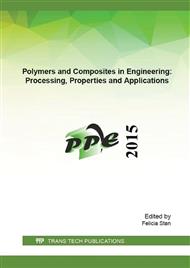p.49
p.57
p.63
p.71
p.80
p.86
p.91
p.97
p.104
Substituting Die-Cast Products by Injection Molded High Performance Polymers
Abstract:
High performance polymers (HPP) represent a wide class of materials which is used in all the engineering sectors from automotive to domestic appliances. Thanks to their high mechanical and functional properties HPPs, have substituted metals in many applications with the result of reducing manufacturing time and costs. In such cases, this substitution also results in an improvement of part performances as in the case of tribological applications, despite of the strong sensibility of tribological polymers to manufacturing processes. However, supplying costs of high performance polymers is continuously increasing in the last years and the cheapness of this substitution is always under discussion. In this work, a comparison is made between injection moulding of glass filled polyamide and aluminum die casting in terms of process energy and production cost. The production of a motorcycle lever has been considered as case-study. The plastic lever has been also prototyped by machining to show its correct functionality.
Info:
Periodical:
Pages:
91-96
Citation:
Online since:
July 2016
Authors:
Price:
Сopyright:
© 2016 Trans Tech Publications Ltd. All Rights Reserved
Share:
Citation:


